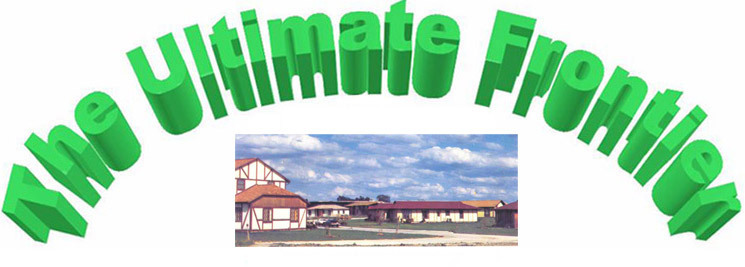|
|
||
|
|
Personal
Preparedness ... a new
“how-to” publication on short term survival We live in
what some people call a shrinking world. Over the last three-quarters of a
century technology has dramatically altered the quality of human life. Modern
communication networks bring history-shaping events right into our living
rooms. Science has reached out and placed man on the moon. Technological innovation
has created myriad labor-saving appliances which has
created myriad labor-saving appliances which are found in the kitchen, work
shop, under the hood of your car—almost everywhere you look. What’s more, we have become accustomed to them and in fact, rely
upon them. Given the
tempo of modern life, it’s hard to conceive of what
it would be like to live without our appliances and devices, all of which
are powered by either fossil fuels or electricity. What would happen if the
lights went out? What would happen if the flow of petroleum stopped? On a micro-level we have already had a few examples: Our
country and world sits precariously close to a major catastrophe. The
instability in the Have you
ever asked yourself what you would do in the event of a natural disaster or a
breakdown in our government? If you have to think about it, you are probably
not prepared. The person who has thought about the possibilities of a major
breakdown and taken action to prepare himself for such a contingency is more
likely to function intelligently during a crisis and assist in the
restoration of order. In the
face of a breakdown or a collapse, developing a personal-preparedness plan is
the best action that a person can take. If nothing happens, fine; if it does,
you’ll be prepared to preserve the safety and health
of yourself and your family. The Stelle Group strongly urges each person and family
to develop their own personal-preparedness plan. A new
newsletter, Personal Preparedness, has been created in order to aid people in developing
their personal-preparedness plan. Published ten times a year by The Stelle
Group, Personal Preparedness is an action
guide to assist the subscriber with a step-by-step
plan of achieving personal preparedness. A
personal-preparedness plan is a program which will
help you weather almost any contingency (man-made or natural) for up to one
year, with no adverse effects upon your mental or physical health. Do not
confuse personal preparedness with long-range self-sufficiency. They are
different. Your personal-preparedness plan is a practical program to enable
you to minimally meet your physical needs for one
year. To do this you will need to develop your own “safe place,” which is
properly located and properly stockpiled with all of the items essential to
your health, well-being and comfort. The
expense of becoming perpetually self-sufficient is unrealistic for many
people, particularly if they believe that a crisis may only be temporary. If
a problem situation looks as though it’s going to
last for awhile, then with your personal-preparedness plan you will at least
have a full year to take steps that will ensure your long-term survival. In
developing your program there are five basic questions which you need to ask
yourself: · What items should
you have on hand to provide for each of your basic physical needs? · How much of
each item are you going to need to fulfill your physical needs for a full
year (on a minimal level)? · Where and
how can you obtain each of these items to complete your personal-preparedness
plan? · how can you protect, package and store-your stockpile so
that it will remain in prime condition until it is needed? · How do you
use the items you’ve stockpiled when the time comes
to implement your personal-preparedness plan? (You want to make the best
possible use of your stockpile because there really is no margin for waste.) Personal
Preparedness will help you answer
these questions as they relate to each major area of your preparedness plan.
Each issue of Personal Preparedness will focus upon one of these key areas
and we’ll present them in what we believe to be the
priority order. Here is the basic outline of the topics to be covered in
future issues: · Financial pointers on
preserving your wealth, “hard money,” optimum investments, financing your
preparedness plan and barter economics. · Food: basic foods that
provide a full nutritional program, processing and storing food, evaluating
survival-packed foods. · Water: emergency
sources, purification and storage. · Heat, light and power: storing
different fuels, making and finding fuels, finding “renewable” energies, and
trimming energy requirements, providing light for night, heat for cooking and
warmth. · Physical defense and security: psychological
preparation, handling threatening situations, buying firearms, avoiding
panicking crowds and riot situations, there is safety in numbers, finding
friends, helping to maintain local sanity. · First aid, hygiene and
health: fire protection, first-aid supplies, bath supplies, laundry,
general cleaning supplies, personal hygiene needs, birth control, birthing. · Waste handling: human
wastes and alternative toilet systems, garbage and composting, solid-waste
handling, waste recycling. · Clothing, drygoods
and “essential frills”: types of clothing, materials; repair supplies to
stockpile; paper, fabric and miscellaneous products to store; little
niceties that help keep spirits high. · Communications and transportation: how
to get around and transport goods when the gasoline stations close; how to keep in touch with the world around you (Stelle
has a shortwave radio). · Keeping your program
rolling during a crisis: making your safe place safer through cooperative
efforts with like-minded neighbors; getting to your safe place if you are not
there already. The first issue of Personal Preparedness is scheduled to be released in June 1979-
You may subscribe by sending $15.00 to Personal Preparedness, The Stelle
Group, Stelle Illinois, 60919 “Forewarned
is forearmed.” |
|
|
|
|
|
